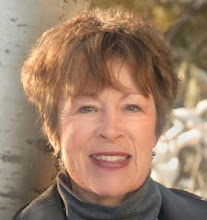Summer, where did you go?
Reflecting on the big summer events in Santa Fe—International Folk Art Market, TraditionalSpanish Market, and Indian Market—I thought of the 20th-century
women who brought recognition to artists in these focus areas. I’ve become
fascinated with women in northern New Mexico who founded cultural institutions.
Lois Rudnick shares my interest and I hope you will, too. In the Summer 2012
issue of the Museum of New Mexico’s magazine, El Palacio, she mentioned several women who played a key role in
promoting Hispanic and Indian arts and artists.
 |
| Mabel Dodge Luhan, courtesy of the Mabel Dodge Luhan House |
I’d known about the activities
of the following women in Santa Fe: Author and activist Mary Austin, (who visited
Mabel in 1919 and with Mabel’s encouragement moved to New Mexico) helped
establish Santa Fe’s Spanish Colonial Arts Society in 1925; poet Alice Corbin
Henderson played a key role in the creation of the New Mexican Association for
Indian Affairs (1922) and the Indian Arts Fund (1925); and Mary Wheelwright, in
collaboration with Navajo medicine man and silversmith Hostiin Klah, created
the Museum of Navajo Ceremonial Art (now the Wheelwright Museum of Indian Art)
in 1937.
Lois provided context for
two women I didn’t know much about, who were only names until now. Leonora Muse
Curtin,opened a native market in 1932 that supported 350 Hispano artisans throughout
the Depression years. Later, together with her husband Y. A. Paloheimo, a
Finnish consul interested in his country’s open-air museums, the couple turned
their home in La Cienega into El Rancho de las Golondrinas, the first
living-history museum dedicated to the Hispanic culture. Margretta Dietrich,
one of the first patrons to support Pueblo Indian women artists, served as
President of the New Mexico Association of Indian Affairs from 1932 to 1953 and
assisted with the inception of today’s Indian Market.
“A city of ladies” (to
coin Mary Austin’s phrase) also led the way in arts and patronage in Taos.
After her husband Burt died in 1922, “Elizabeth” Lucy Case Harwood created the
Harwood Foundation, which eventually became today’s Harwood Museum of Art under the
auspices of the University of New Mexico. Helene Wurlitzer established the Wurlitzer
Foundation in 1954, one of the nation’s oldest artist-in-residence programs. Helen
Greene Blumenschein dedicated the Blumenschein Home and Museum, her artist
family’s home and furnishings, to the community of Taos in 1962. Eya Fechin
preserved the home and studio built by her father, artist Nikolai Fechin, between 1927 and 1933, until 2002 when the complex evolved
into the Taos Art Museum.
 |
| Some of Mabel's santos |
Where does Mabel come in?
She started collecting New Mexican santos
(religious images) soon after her arrival in December 1917. Two years later,
when Mabel sent her collection to be shown at a New York gallery, she became
one of the first patrons to promote these objects as art forms. She further publicized
this art form in 1925 with an article titled “The Santos of New Mexico” in The Arts, a nationally known magazine. Some
time after 1947 Mabel gifted her collection of santos (saints) by renowned santeros (saint makers) like Jose Rafael
Aragon and Molleno who worked in northern New Mexico in the 1800s, to the
Harwood Museum of Art.
 |
| La Santisma Familia (The Holy Family), circa 1850 by Jose Rafael Aragon. Courtesy The Harwood Museum of Art |
Hispanic and Indian arts
got another boost from Millicent Rogers starting in 1947 when she began
collecting jewelry from Navajo reservations and from the pueblos along the Rio
Grande. She soon added Navajo, Rio Grande and Hispanic textiles, Pueblo pottery
as well as basketry from various Southwest tribes to her collection.
 |
| Millicent Rogers. Courtesy of Millicent Rogers Museum |
A trend
setter in the world of fashion, Millicent brought national attention to the
arts of the Southwest in the late 1940s and early 1950s. Following Millicent’s
death in 1953, her sons created the Millicent Rogers Museum with the her
Southwest collection as the formative base. The museum opened 1956 and is today
an important resource for the study of southwestern art and design.
 |
| Navajo Third Phase Chief's Blanket. Courtesy of Millicent Rogers Museum |
I remembered a phrase from
the book and theater piece Po’Pay Speaks,
based on the Ohkay Owingeh (San Juan Pueblo) Indian who hid from Spanish
authorities at Taos Pueblo for two years before leading the Pueblo Revolt of
1680. The passage mentions how Mabel Dodge and other white people “helped keep
things alive until we [Indian people] found our voice.” In their support of the
native arts of New Mexico, Mabel, Millicent and their contemporaries undoubtedly
laid the groundwork for today’s Indian and Hispanic artists. I think they would
be pleased.
Adios for now,
Liz

This comment has been removed by a blog administrator.
ReplyDelete